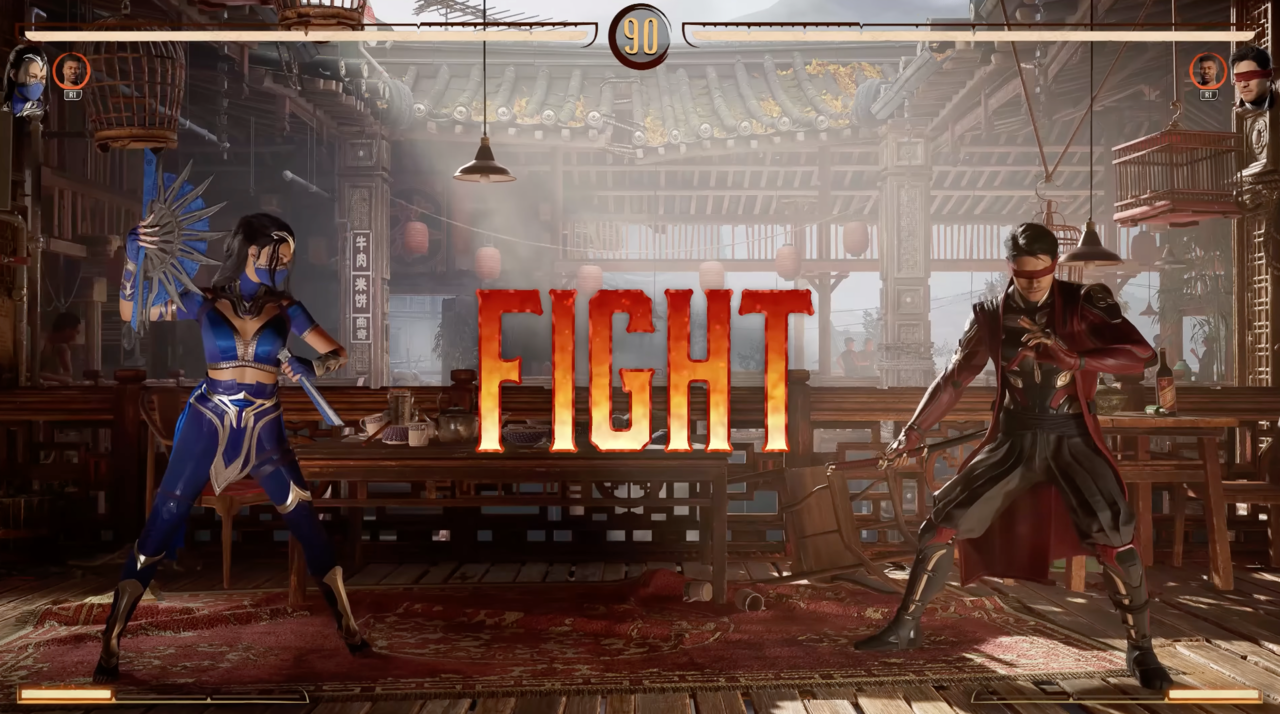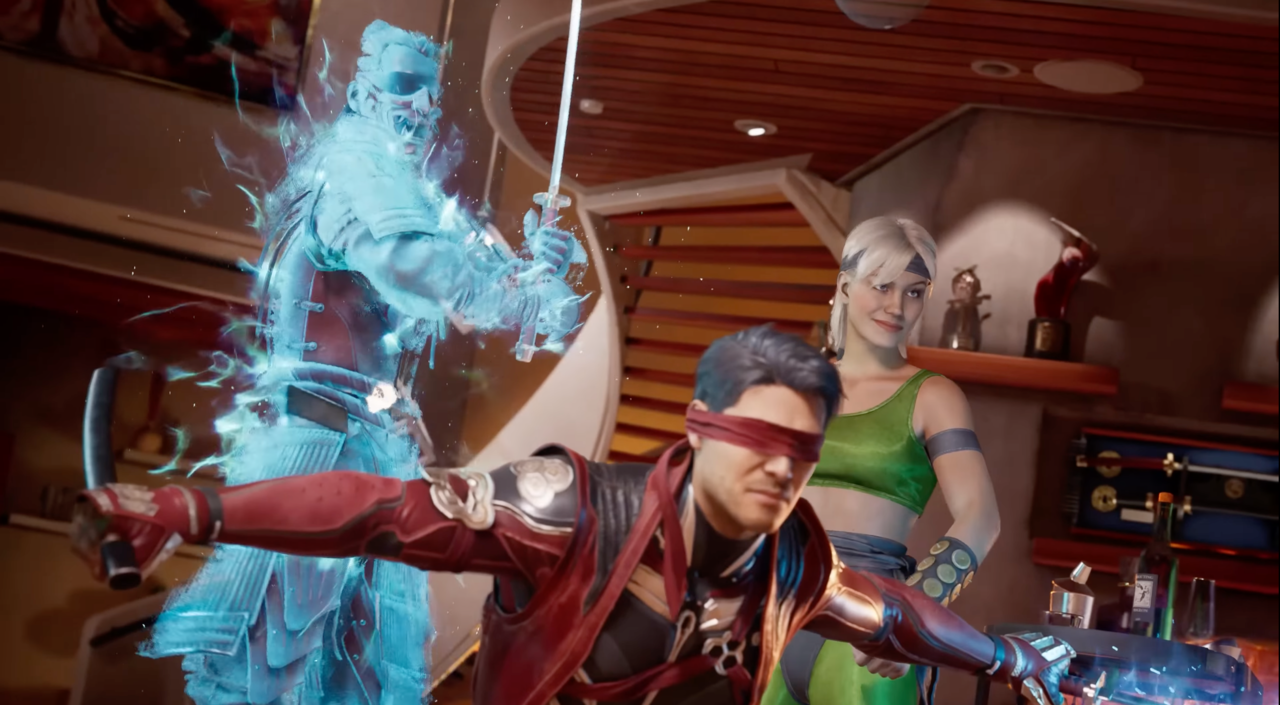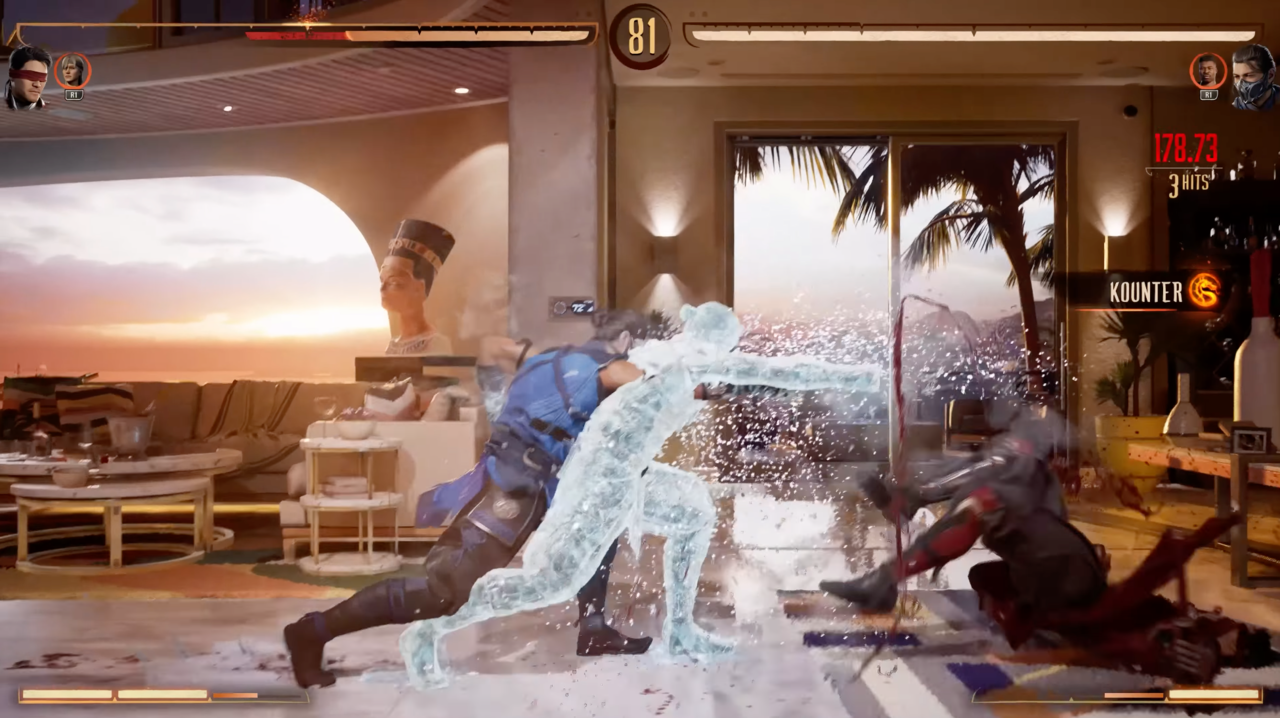Mortal Kombat 1 was one of the headliners at Summer Game Fest 2023 with a lengthy trailer during the event's showcase, and we got hands-on with an early build of the game. It seems to be both an evolution of the series from a gameplay perspective and a sort of reset for its story and characters. While we saw some of the over-the-top hijinks expected from a Mortal Kombat story, playing MK1 gave us a feel for how the brand-new Kameo system works and how a familiar roster of fighters play much differently this time around.
We spoke with series co-creator Ed Boon about the design philosophy behind revamping characters we already know and love. But we also went in-depth about how new mechanics have led to noticeable changes for the flow of matches--for example, aerial combos and Kameo assists add a new dynamic that wasn't present in MK11, and the result is a game that plays faster and looser. We also went through specific changes to the playable roster in the demo, which included Kitana, Liu Kang, and Scorpion, and how the return of Kenshi adds a new layer of complexity to the fight system.
(This interview was edited for clarity and readability.)
GameSpot: One of the most impressive parts of Mortal Kombat 11 was the story content, and it seems like y'all are doing some wild things with MK1. Can you give as much detail as you can about what you're trying to achieve with the story for MK1?
Ed Boon: We are really trying to tell a new story. At the end of MK11, as you know, Liu Kang was made the Fire God, and he eventually became the keeper of all things--the ultimate being. And so he created a brand-new universe, created a new Big Bang. Basically, he was trying to restart everything with the hopes that everything was going to turn out better than the previous timeline and Mortal Kombat.
And so with that Big Bang, we're noticing a lot of the same characters, but they're going to be reintroduced with brand-new identities, backstories, roles, and relationships with each other. And that is basically the premise that it's a brand-new story using characters that you already know and love, but in a completely different scenario.
Yeah, it feels like that gives y'all a blank slate to reimagine these different characters and start anew.
Yeah, we really didn't want to start a whole new thing and have brand-new characters when everybody wants to see Sub-Zero, Scorpion, Raiden, and Liu Kang return. So we felt like telling a new story with existing characters was the strongest way to go.
The way I always describe it is it's familiar characters with different relationships--some similar events, but some completely different events. It's going to be really engaging because some things you might predict or see coming, some things you might predict wrong, and then there's a big twist. There are a lot of origin stories. Again, it's these characters you've always seen, but you see how they became as you know them, so a lot of that novel kind of presentation.
Can we expect references to the Mortal Kombats of old?
Absolutely, absolutely.

Out of the playable roster today, I want to go through each character and how they've changed. From a gameplay perspective, how has Kitana changed from MK11 to MK1?
The function of her fans is dramatically different. Normally they behave as projectiles--they hit you, they do damage. Now they kind of circle around you, lift you up to set you up for combos. They have wilder paths they take, and they can curve as opposed to kind of just being straightforward. They're more versatile than they were before; her fans have very different properties.
For Liu Kang, he's a fire god now wielding fire in all his moves. He's changed dramatically, and we've already seen him do some wild things. Can you explain how he's different from MK11 to MK1?
Liu Kang's biggest difference is he has a much wider range of projectiles. Fire projectiles like a standard one, then a very tight one that's like yin-yang on fire that spins. He has his ground-based one that's a snake. He has this gigantic one that he follows up with a flying kick. And then he has an aerial one that shoots like six or seven fireballs--if you catch somebody, you can juggle that with a number of hits. So he's a lot wilder; he's still very accessible, but his projectiles are cranked up to an 11.
For Sub-Zero, how has he changed from MK11 to MK1?
Sub-Zero has some recognizable moves, but then he also has a few tricks up his sleeves. Like he has his clone, but now there's a version where you can use three of them creating a wall of ice that the opponent will have to figure their way through. He has his classics like his slide, projectile, and all that. But the big kind of crazy clone thing is what stands out from my perspective.
So, Kenshi is back. Of course, he wasn't in MK11 at all, so it's kind of a big deal. How does he fit into the fighting style of the modern Mortal Kombat?
Kenshi's big emphasis with this game is the spirit that he can control. Imagine it like this ghost that also has a sword, and he can come flying from the ceiling or out of Kenshi himself. And the ghost can jump out and fight, and the player can control the ghost independently and have him do the dirty work. So I think Kenshi is one of the more sophisticated characters in the game, and it's going to take some practice getting there. But in addition to that ghost, you'll have a Kameo character. So in a sense, the player is going to be thinking about the three characters they're responsible for.
Can you go a little bit more in depth on how the team built Kenshi and his ghost, introducing another element that wasn't previously in the game in addition to the Kameo system?
When I saw it, I was a little bit concerned, [saying] "Oh, now we've got to worry about this ghost character as well as the Kameo character." But the number of really interesting combos you can come up with, to me, made up for that. It's good to have a character that's a little bit more on that hardcore side. But the main motivation came from the design team, and that's something they wanted to do.

On the topic of Kenshi, how does he fit into the story of MK1, if you can share any details about him specifically?
We don't have a lot of details we can share, but as you saw in the trailer, certainly there's a relationship between Johnny Cage and Kenshi. Johnny Cage purchased Kenshi's sword, and he basically wants to get it back. That's their main conflict, and Johnny Cage paid like three million dollars for it, so obviously he's not going to just give it up. But then they have a really great story arc together and there's a bond between those two that's really going to pay off.
One of the surprising things is how much emphasis there is in the aerial game and air combos. It feels like you're adding another layer that wasn't previously in there. Is that something that you saw as maybe a criticism or an area you could explore more with MK1?
We always want our games to play differently from each other, especially with MK9 to MK10 and to MK11. And we don't want anybody to pick up Mortal Kombat 1 and say, "Oh, this feels like MK10 or MK11." We really want it to have its own identity. And if I were to describe how MK1 plays compared to the previous games, I would say we loosened up restrictions; we really loosened things up.
And so we're just going to the player and saying, "Here's a sandbox full of toys with combos; adding air combos, adding Kameo characters, and seeing what they can do." By giving them all these tools, I think we really needed to loosen the strings and let the player work with fewer limitations. I would describe MK1 as maybe the loosest game we've had. We're seeing our testers and some of the other players coming up with stuff that we didn't even think of and going, "Oh, I didn't think you were able to do that!" To me, it's evidence that we're onto something where the player can be more inventive.
In addition to the Kameo system, it just feels like a much more offensive game.
Yeah, I think that's a fair assessment. There are deeper types of features, and we're encouraging combos and collaboration between the main fighter and the Kameo fighter.
Having a combo breaker is also really interesting, because I feel like MK11 was a much more defensive game, and it was harder to break out of sticky situations. Is that something that you really took into consideration?
Absolutely, absolutely. Right from the beginning, we knew we were going to do breakers. Then when we developed the Kameo characters, we thought it'd be great to get them involved in breaker moves, super moves, throws, all those things. I just really wanted to incorporate them as much as we could.
Diablo 4 | Loot Reborn | Gameplay Trailer Dead By Daylight | Official Castlevania Teaser Trailer Project T (New Dead By Daylight World Game) | A First Look The Casting Of Frank Stone | Official Story Gameplay Trailer Dead By Daylight X Dungeons & Dragons | Official Cinematic Reveal Trailer Dread Delusion 1.0 Launch Trailer Robobeat | Official Launch Trailer Stumble Guys - Official PlayStation Launch Trailer Samurai Warriors 4 DX - Steam Launch Trailer Valheim: Ashlands - Official Animated Release Trailer Homeworld 3 | Official Launch Trailer Stellar Blade - Accolades Trailer | PS5 Games
Please enter your date of birth to view this video
By clicking 'enter', you agree to GameSpot's
Terms of Use and Privacy Policy
I want to dig a little bit deeper into the Kameo system; how it was built and the challenges in development by adding a new layer to the system.
I think whenever you add a new mechanic into a fighting game, there are challenges that come with it--how does that play with the existing things we have? We wanted some amount of familiarity, but also a simplicity to it.
Kameos started as a completely different feature. Our design team wanted to have individual things like a drone for Sonya, or something like the cat with Atrocitus in Injustice 2 that would come out and help you. And I was pushing for [the idea that] everything needs to be able to be used by everyone. We didn't want to just have a drone for Sonya; we wanted to have a drone for everybody [for example].
I also wanted to have more of a novelty with our old games. And so that turned into characters that would come out to help you. The fact we have Mortal Kombat, [we have] about 100 characters we can dig from and include in the game. Once we started to think of it as having two rosters--the main roster and the Kameo roster--it really took a life of its own.
We didn't want to go full-on tag [fighting] because it was a great feature in MK9, but it wasn't the most used feature, right? I think at the end of the day, it was because players would have to learn two full characters completely. So we just use [the Kameo system] as a utility. Now, you like Kung Lao's teleport? Grab his cameo and he'll grab you and teleport with you. You like Jax's ground pound, you like Kano's ball, you like all those iconic moves? You can take them along with you if you're playing as Scorpion or Sub-Zero [for example]. There's that mixing and matching and something really special going on with this [system].
With other modern fighting games, we're seeing different control schemes like Street Fighter 6's Modern control scheme and Tekken 8 incorporating simplified controls. Is there anything in MK1 that you've kind of reinvented this time around in terms of control schemes or accessibility?
Certainly, every game is adding more features for visually impaired players to enjoy [for example]. MK1 is not an exception. But as far as the simple control schemes, I feel like Mortal Kombat has always kind of taken the approach of less challenging input requirements to execute a move. That goes all the way back to the first Mortal Kombat where even Liu Kang had a lot of 'tap, tap, high punch' or 'tap, tap, low punch.' A lot more people can do that than, say, a dragon punch (DP).
We've always kind of rested in that space of easier controls, so I don't think we needed to go too much easier with our controls, and certainly with our new feature, the Kameo system, it's basically a button you push or push with forward. Anybody can bring a Kameo character out without being technically challenged in terms of input.

We had Versus Mode available here today and you've mentioned that Towers are available still. Are there other types of modes or content we can expect from MK1 that you can share right now?
There's a ton of new stuff that's going to be coming; a whole new game mode that we've never had in any Mortal Kombat game before, a new system of unlocks, and obviously additional characters and DLC characters. We're also going to have a lot of new stuff to announce before September.
I know you can't talk about guest characters specifically, but how are you approaching guest characters this time around? Is that something we can expect in the future?
Oh yes, we're always talking about guest characters. The process of getting a guest character isn't just us going, "Oh, it would be cool to have Freddy," and then he's in the game. There are owners of the IP and there are all these other requirements and we've got to check the boxes. So we're always in a state of exploring numerous guest characters. Some make their way through [the process], some get hit by a hiccup or some legal thing that prevents us from doing it. We always have eight or nine plates spinning, and it's about who calls [back] and makes it through.

